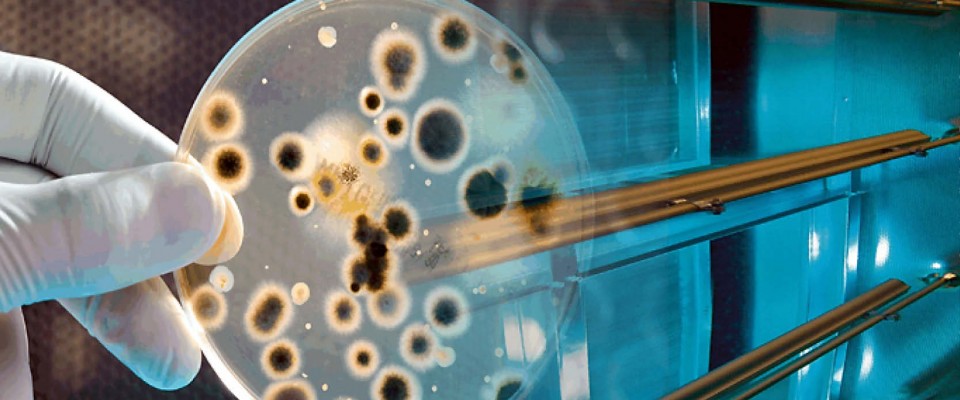Deep Tech solutions from Spain to coexist with Covid-19

At this time, while there is still no vaccination, prevention and hygiene are the best allies in the face of Covid-19. That's why secpho, the deep tech innovation cluster from Spain, collected some of its members' solutions that Deep Tech, and especially photonic technologies, can offer for a reactivation of the daily activity, in order to adapt to the new normal.
Click here for the Press Release (Spanish version)
STERILIZATION SYSTEMS:
Sterilization technology through UV lighting can be a powerful ally against COVID-19. LED ultraviolet light (UVC) technology for sanitation and purification purposes is common in the hospital environment, as it can kill microorganisms, such as bacteria, viruses and other pathogens, or prevent their development. The main drawback of this system is that radiation can be harmful to human skin. That is why so far its application is done at times when no one is present during disinfection.
These are the different solutions offered by secpho members:
- UVC Light + Violet Light + Multispectral Light. LEDMOTIVE presents a disinfectant lighting solution for shops, offices and hospitals that combines these three different lighting concepts; integrating a proven double disinfectant action and a visual element that communicates to the public that they are working on their health care. These new functions are combined with the advantages offered by its multispectral light system in terms of dynamism, comfort, well-being and better representation of colours.
- Infrared radiation + UV light. Eurecat Technology Center has successfully tested two technologies for disinfecting FFP2 and FFP3 masks: first, infrared radiation is applied, which heats up the mask, and second, UV light is applied.
- UVC light + surface functionalization. AMS Technologies proposes the germicidal light of UV-C lamps that emit at 222 nm which, unlike others, are not harmful to people, as confirmed by several studies. They also have pulsed fiber lasers to functionalize surfaces and give them hydrophobic properties, which prevent the deposit of bacteria and the formation of biofilm.
- UVC LIGHT + Mobile collaborative robots. MTS Tech has developed a system that integrates two technologies: a collaborative mobile robot (ARM) and ultraviolet light (UV-C) that can move autonomously through any space while performing disinfection of different environments without putting workers at risk.
DETECTION SYSTEMS:
Either to monitor and remember the social distance between people or to identify those with fever.
These are the different solutions offered by secpho members:
- Thermography + Air Purifiers + Spectroscopy. Álava Ingenieros presents solutions to combat COVID19 in all types of environments and with different technologies, from cameras and thermographic systems for measuring body temperature, air purifiers to maintain a working environment free of particles, including those of COVID-19. It also provides cutting-edge technologies such as spectroscopy that can be applied as a powerful new tool for automated clinical and laboratory analysis of viruses and bacteria.
- Thermography + Deep Learning. CTRL4 ENVIRO proposes a customized system capable of analyzing anonymously the images already available from CCTV cameras in public spaces to warn their managers, directly to their users or even to the authorities of the level of maintenance of social distance.
- Optical 3D sensors for man-machine interface. Hamamatsu Photonics develops sensors that can detect the distance between subjects, count how many people are in a room, or interact with a machine without contact.
- Electromagnetic Sensors + Radiofrequency Signals. Nütech Resarch offers a technology focused on the prevention of social distance that facilitates the prevention of crowding in industrial workplaces and provides safer coordination of the flow of workers.
- Integrated photonic biosensors for rapid determination of coronavirus. The Institute of Microelectronics of Barcelona produces photonic transducers for the development of biosensors for test devices in the direct diagnosis of SARS-CoV-2 coronavirus.
PREVENTION OF CONTACT BETWEEN HEALTHCARE PERSONNEL AND PATIENTS:
Robotics and Artificial Intelligence can be of great help in limiting physical interaction between people without diminishing the quality of service and reducing the risk of contagion.
These are the different solutions offered by secpho members:
- Collaborative mobile robotics. Robotnik proposes to introduce robotic systems in hospitals to perform tasks such as cleaning, disinfection, communication with the patient, food transport or patient transport. In addition, Robotnik is participating in the European project ENDORSE which aims to validate the integration of an electronic diagnostic module (equipped with non-invasive sensors) in a mobile robot from Robotnik, so that it can serve as a direct interface for obtaining the status of a patient remotely.
- Artificial Intelligence to measure the level of insulin. Insulcloud proposes a system formed by a patented Artificial Intelligence device that is anchored to disposable insulin pens to monitor the insulin that the person is injecting and a mobile application that records all the data in the cloud so that healthcare personnel can monitor it in real time.
You may check the Press Release (in Spanish) for details about the above-mentioned applications or contact with Elisenda Lara (elisenda.lara [at] secpho.org).